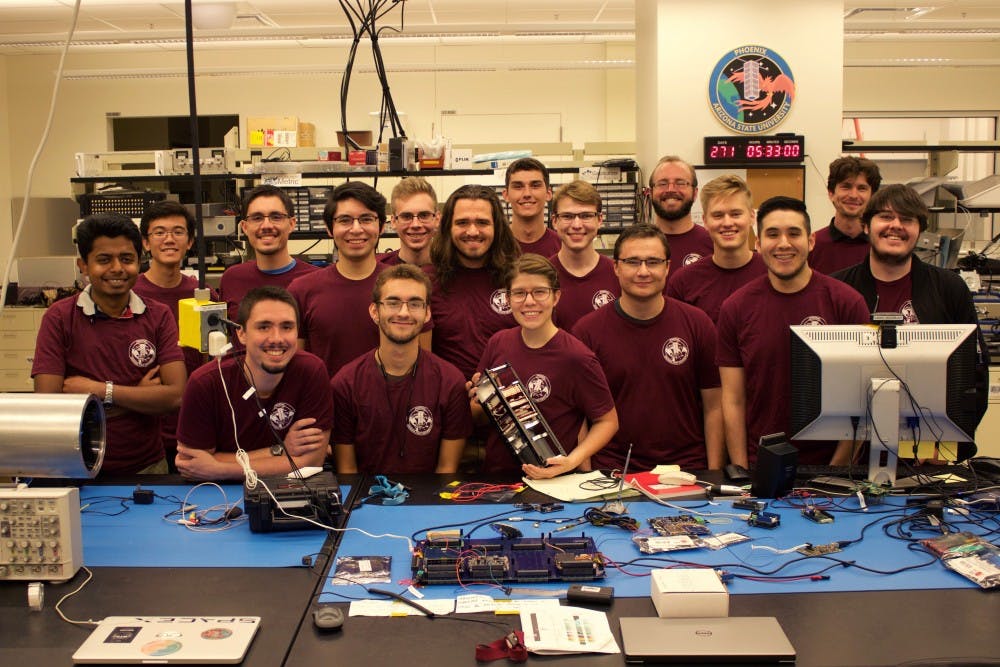ASU students are shooting for the stars with a satellite set to launch this fall in an effort to better understand how urban areas impact climate change.
The satellite was the collective effort of dozens of students and countless hours of labor. The final result came to life in a CubeSat named Phoenix that uses infrared remote sensing to monitor how city structures cause a rise in surface temperature.
“The materials used in many cities like asphalt and concrete absorb heat and that heat gets trapped, which raises the temperature,” Sarah Rogers, project manager and graduate student in aerospace engineering, said. “Phoenix is studying how the structure of land areas leads to that increase, and then decrease, in temperature.”
The impact of urban developments on temperature change is called the urban heat island effect, and plays a large role in climate change, Rogers said.
The satellite will fly over population-dense cities including Phoenix, Los Angeles, Houston, Atlanta, Minneapolis and Baltimore.
It will be ASU’s first CubeSat to go into space, making history for the University.
The student-lead project was funded by NASA and is set to launch in mid-October.
Rogers said the project allows students to make a difference in a once unreachable realm: space.
"It's close enough for a group of students, both grad and undergrad, to work together and do something really big," Rogers said.
Phoenix started as a student-drafted proposal with guidance from ASU faculty, and, once launched into space, it will inform urban planners and scientists about the connection between urban landscapes and climate change.
According to KTAR News, NASA gave the University a $200,000 grant to complete the project.
Rogers said the opportunity to work on the project was invaluable, especially at a public university.
"You don't have to go to MIT or Stanford to pursue these opportunities," she said.
Many students, like Rogers, started working on the project in their first year of college. Students involved in the Phoenix project have learned many lessons through their efforts, not all of them involving software or infrared remote sensing.
Craig Knoblauch, an ASU alumnus who worked on Phoenix said one of the best parts of the project was the growth in communication and collaboration between those involved.
Phoenix was made in collaboration between several ASU schools and required participants from different academic specialties. Knoblauch said the knowledge and involvement every team member brought was crucial in completing Phoenix.
“One of the greatest highs of that project was when all the different teams started to better understand each other,” Knoblauch said. “That took effort from everyone, and once we got that we really started to gain momentum.”
Raj Biswas, a lab coordinator who worked closely with the project, said Phoenix being student-lead did not minimize the importance of their work.
“Working with the students taught me a lot, especially because everybody had something to offer,” Biswas said. “These were people who, regardless of age, are very hardworking and very bright. They had to give everything to achieve their goal, and they did.”
Reach the reporter at kreinha3@asu.edu and follow @ReinhartKatelyn on Twitter.
Like The State Press on Facebook and follow @statepress on Twitter.
Continue supporting student journalism and
donate to The State Press today.




